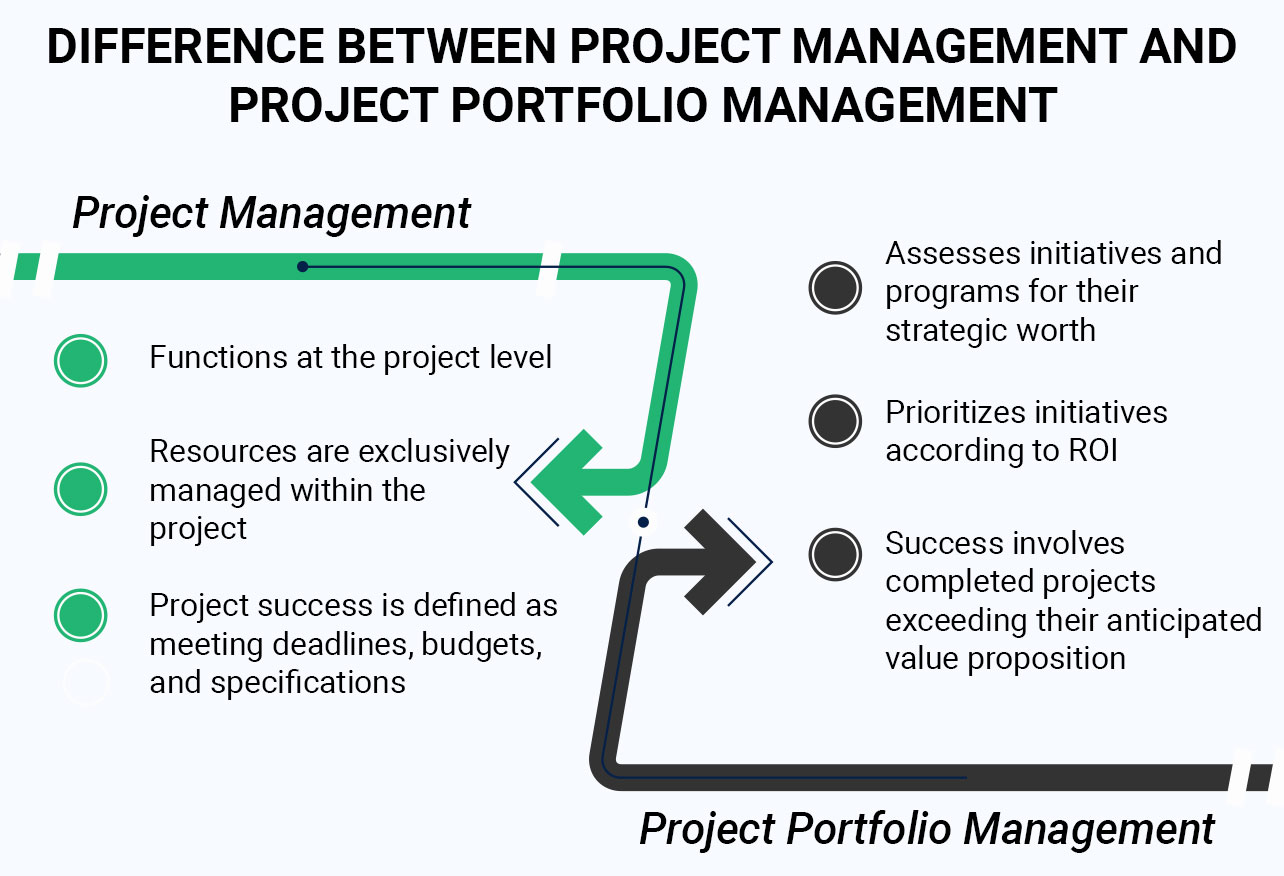Quick Summary: Despite decades of effort, project failure rates remain alarmingly high. The Standish Group reports that only 16.2% of IT projects are completed on time and within budget, with 31.1% canceled before completion. Traditional project management approaches often fall short in today's dynamic business environment. However, integrating AI into project and portfolio management offers a transformative solution. Gartner predicts that by 2030, 80% of project management tasks will be automated through AI, enabling proactive risk management and strategic alignment. This article explores how modern PPM, empowered by AI, can convert strategic initiatives into measurable outcomes, enhancing efficiency and stakeholder confidence.
Managing a single project can be challenging, but juggling a portfolio of projects demands a robust, multi-faceted approach. Too many companies set bold strategies that stall the moment execution begins. Projects pile up, priorities blur, and resources are stretched thinly. And before anyone notices, deadlines slip, and value diminishes. According to a report from Standish Group's CHAOS study, approximately 52% of projects miss deadlines, exceed budgets, or fail to meet objectives. The study also reveals that 19% of the projects fail outright. Project and portfolio management (PPM) isn’t a support function—it determines whether ideas across the organization convert into measurable success.
Your team requires an effective structure, while stakeholders demand a clear view of outcomes. So, how do you help your project leaders achieve them? Successful project and portfolio management requires masterful coordination and resource allocation. PPM solutions become essential to maximize capital, utilize resources efficiently, and keep all projects and programs on track. Studies highlight that 4 out of 5 project managers depend on project portfolio management as an essential framework to stay on track and deliver projects successfully.
Predictive project management is the next evolution in project and portfolio management. This approach applies AI and data-driven insights to anticipate risks, inform strategic decisions, and improve outcomes before challenges surface. It fundamentally shapes how forward-looking organizations execute and deliver on their strategic priorities. If your organization is still managing projects reactively, it’s time to change course.
This article will delve deep into project and portfolio management, its importance, and key steps that should be included in the PPM process. We will also explore how AI reshapes project and portfolio management, real-world examples, and potential challenges and opportunities.
What is Project and Portfolio Management?
Project Portfolio Management (PPM) is a systematic process through which an organization assesses and executes its projects to ensure they align strategically with the company's goals. PPM offers executives, project managers, team members, and stakeholders a comprehensive perspective on their projects, illustrating how they contribute to the organization's overall directives and strategy. This insight aids in understanding the potential returns and risks associated with the projects.
A project portfolio can include a collection of independent projects with distinct goals or programs, or groups of interrelated projects working toward a shared objective. In many cases, it’s a blend of both. The actual value of project portfolio management lies in its ability to identify and prioritize initiatives that promise the highest return on investment, followed by the strategic allocation of resources to execute them effectively.
According to the Project Management Institute (PMI), project and portfolio management are significant because they bridge strategy and implementation. A portfolio manager is crucial in ensuring that the right projects are undertaken at the right time to maximize the company's investment, particularly in organizations with numerous internal projects.
Why Project and Portfolio Management Demands Executive Attention
Every initiative consumes time, capital, and talent. Without a strong project portfolio management foundation, those resources are scattered across disconnected efforts that don’t move the needle. Executives end up with partial views, unclear performance signals, and delayed realization of strategic value.
Prioritizing PPM means approving projects and shaping outcomes. It gives project leaders the insight to make informed trade-offs, shift direction confidently, and stay ahead of risk without chasing status updates.
When governance is weak, project selection becomes subjective. When priorities aren’t clear, teams focus on delivery instead of impact. And when leadership lacks visibility, strategy becomes static while execution drifts. In a business environment where project ideas can emerge spontaneously, project and portfolio management become essential for comprehending which projects will have the most significant beneficial impact on the company. This understanding allows project prioritization based on available time, funds, and resources. So, what kind of companies benefit from project and portfolio management? We have got you covered.
Stop wasting time on scattered projects with unclear value. See how TrueProject helps executives control outcomes, not just activities. Experience the power of predictive PPM—book your demo now.
Industry-Based Use Cases
Project and portfolio management is a versatile solution applicable across industries, providing companies with the tools to enhance project management, mitigate risks, and align project activities with overarching strategic objectives. Therefore, project and portfolio management are necessary for any company to work on several projects simultaneously. Let’s look at the industries that benefit from PPM:
- IT (Information Technology): Information technology teams, often characterized by smaller, specialized talent pools and substantial budgets, can leverage project and portfolio management for resource profiling. This involves updating skills inventory to align with peak demand periods and utilizing data-driven forecasting to assign teams to value-driven projects. PPM enables IT teams to meet project demands successfully without overburdening or underutilizing their resources.
- Construction: For long-term, complex projects, project and portfolio management helps manage shifting budgets, stakeholder expectations, and staff turnover. It ensures teams stay aligned with strategic goals despite on-the-ground changes.
- Financial Services: Accuracy is everything. PPM enables banks and credit unions to set performance thresholds, respond to trends, and monitor metrics in real time to efficiently meet project objectives.
- Project Management Teams: Wellington’s State of Project Management report highlights that only 29% of companies deliver projects on time. PPM helps mitigate delays, manage risks, and prioritize high-value projects, improving stakeholder visibility and success rates.
- Professional Services: PPM supports budget planning, workflow efficiency, and consistent project delivery—even across multiple concurrent engagements- from small firms to large agencies.
- Marketing Teams: Whether launching new markets or boosting digital presence, marketers use PPM to prioritize efforts aligned with business strategy, focusing on impact over isolated execution.
So, why are project and portfolio management critical for your organization’s project success? Can you succeed without a clear link between your organizational goals and project value? Undoubtedly, the answer is no. It is here that project and portfolio management play a critical role. Let’s understand the benefits of PPM for your organizational success.

Benefits of Project and Portfolio Management
Project and portfolio management promotes a holistic perspective, ensuring each project contributes meaningfully to the larger strategic vision. Therefore, decisions are no longer shrouded in subjectivity but based on robust data-driven frameworks. PPM also offers quantitative and qualitative analyses, encompassing risk assessments, resource availability, potential return on investment, and guided project selection and prioritization.
The benefits of adopting PPM are multifold:
- Increased profitability: Optimized resource utilization and improved strategic alignment pave the way for significant cost reduction and maximized ROI.
- Maximize resource utilization: Break free from resource silos and optimize talent allocation. PPM facilitates coordinated project scheduling, mitigating resource conflicts, and ensuring efficient organizational utilization.
- Elevated stakeholder confidence: Transparency and data-driven decision-making cultivate trust and buy-in from stakeholders, fostering a culture of collaboration and shared success.
- Boosted organizational agility: The ability to quickly adapt to changing priorities and market conditions provides a distinct competitive advantage in today's dynamic environment.
- Governance and oversight: Project and portfolio management establishes a natural governance model, providing a holistic overview of all projects. Furthermore, it allows for the creation of contingency plans and data-driven decision-making.
- Drive strategic alignment: It bridges the gap between company objectives and project execution. No more misdirected efforts; PPM ensures each initiative contributes tangibly to the overarching vision.
Although project and portfolio management is highly beneficial and leads companies towards success, traditional PPM is not free of challenges. Project activities intersect various business domains, involving multiple teams, functions, tools, and systems, which inherently raises the risk of problems affecting overall project management efficiency. Addressing these challenges is crucial for optimizing coordination and collaboration to ensure a seamless project and portfolio management process. Let’s take a deeper look at the challenges now.

Real ROI. True Alignment. Smarter Decisions. Don’t let disconnected teams and outdated tools slow you down. Discover how TrueProject redefines project and portfolio management with predictive insight and seamless execution. Learn how it works.
Challenges of Traditional Project and Portfolio Management
1. Misalignment with Evolving Business Goals
Conventional project and portfolio management systems struggle to keep up with shifting strategic priorities. They lack real-time feedback loops and adaptive frameworks, making it hard to reassess and realign portfolios as goals evolve. As a result, projects may continue consuming resources even when they no longer contribute to business value.
2. Inefficient Resource Allocation
Project managers must carefully allocate the right projects to the right resources at the right time. Challenges include competing project demands, limited access to specific resources, and intermittent availability. Without real-time resource insights, teams are misallocated, timelines slip, and critical initiatives stall.
3. Poor Forecasting of Project Value
Traditional PPM approaches frequently lack the data depth and analytical power needed to assess potential ROI accurately. Project selection often depends on intuition or incomplete information, increasing the risk of pursuing low-value initiatives. This can lead to missed opportunities and wasted investments.
4. Reactive Risk Management
Risk management in conventional project and portfolio management is usually a checklist activity, not a living, responsive process. Risks are identified late—if at all—and mitigation plans are often outdated by the time they're implemented. Traditional frameworks focus on documenting risks rather than predicting or preventing them.
5. Inability to Respond to Market Shifts
Rigid planning cycles and slow approval processes make it difficult for the traditional project and portfolio management framework to pivot when market conditions change. Organizations relying on legacy systems often lag behind competitors who adapt more quickly. There's no built-in agility. Therefore, it lacks the flexibility to reprioritize or reallocate on short notice.

So, how do you overcome these challenges? The direction is clear. Modern technology solutions such as AI-powered predictive analytics play a critical role here. As organizations adapt, the ones who lead will adopt predictive approaches early and embed them across their project portfolios. Let’s explore the advantages of predictive analytics in project and portfolio management.
How Is Predictive Analytics Reshaping Project and Portfolio Management?
An artificial intelligence-powered project management solution is crucial for organizations to effectively manage complex and dynamic projects. Integrating AI into a project and portfolio management framework opens new business possibilities. The benefits include enhanced forecasting, project selection, real-time monitoring, and collaboration. AI brings opportunities to drive efficiency and success in modern project management, empowering organizations to achieve their strategic goals. Studies indicate that by 2030, 80% of project management tasks will be run by AI, powered by big data, machine learning (ML), and natural language processing. Broadly adopting the AI-powered solution will bring about radical changes.

Here are some benefits of AI-enabled project and portfolio management systems:
Enhanced Efficiency: The predictive project management solution can automate repetitive tasks such as data analysis, scheduling, and documentation. This automation allows your project managers and resources to concentrate on more strategic activities, boosting overall efficiency.
Smarter Project Selection Starts with AI: Most leaders evaluate projects in isolation, risking bias and missed value. AI changes the game by analyzing all project data—ongoing, completed, even proposals—to identify what’s truly worth pursuing. It helps remove personal bias and offers clear, data-driven insights.
Better Stakeholder Engagement: The predictive project management solution isn’t just about internal efficiency. It also strengthens external relationships. It pinpoints key stakeholders and predicts shifts in sentiment. You stay a step ahead—and engage with relevance and empathy.
Data-Driven Decision-Making: Predictive project and portfolio management analytics can recognize patterns, risks, and opportunities within project data. This enables more accurate and proactive decision-making in PPM based on data-driven insights.
Improved Resource Allocation: A predictive intelligence-powered project management solution can optimize resource allocation by analyzing historical data, project requirements, and current resource availability, ensuring more efficient resource utilization.

Real-Time Monitoring and Risk Detection: AI-powered project portfolio management framework enables continuous performance tracking and risk alerts. It pulls data from multiple systems, applies analytics, and flags issues before escalating. Resources get reallocated quickly, keeping you aligned with goals and avoiding last-minute firefighting.
Predictive Insights into Portfolio Health: Imagine knowing ahead of time when a project might go off-track. Predictive analytics spots early warning signs and sends alerts. Over time, it can even factor in the project manager’s past performance to forecast success probabilities. This isn’t about replacing people. It’s about empowering them with better foresight, better planning, and a stronger chance at success.
Embracing the Future: The Path to Project and Portfolio Management Excellence!
Traversing the complex landscape of project and portfolio management demands a strategic blend of structure, foresight, and technological innovation. Adopting strategic project and portfolio management allows you to align your projects with strategic goals, optimize resource allocation, and enhance overall efficiency. The versatility of PPM is evident across various industries, from information technology and construction to financial services and marketing, demonstrating its universal applicability. While traditional project and portfolio management faces challenges such as aligning with evolving organizational goals and balancing resources, integrating modern technologies, particularly AI-powered predictive analytics, offers a transformative solution.

Predictive analytics streamlines processes, enhances efficiency, empowers data-driven decision-making, improves resource allocation, and strengthens risk management. If you want to implement one such powerful solution, look no further than TrueProject. TrueProject, a KPI-based predictive project management SaaS solution that improves project health and performance, provides in-depth insight into your portfolio's probability of success. The solution proactively spots issues, addresses unmet KPIs, and quickly identifies systemic problems. You can instantly view where systemic issues are creating project delays, failures, and money loss.
Running practical projects is the single way to innovate, change, and enhance your organization’s competitive position. So, protect your portfolio of projects and your career with TrueProject. Your mastery of project and portfolio management is not just a strategic necessity but a visionary investment in the future of project management excellence.
Don’t just manage projects—predict their success. TrueProject empowers you to lead with insight, act precisely, and deliver confidently. Explore how predictive PPM changes the game.






